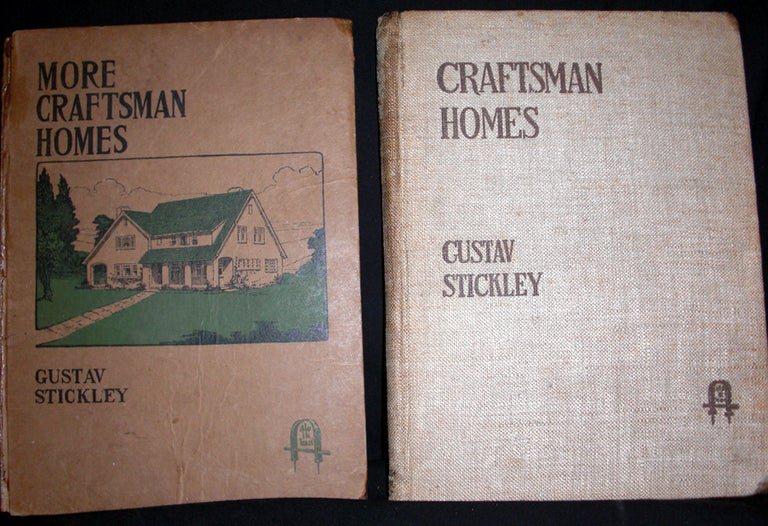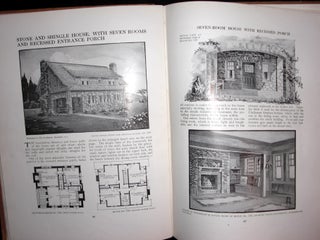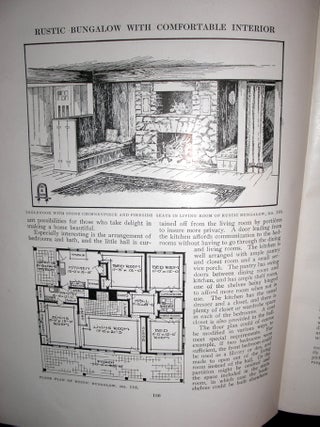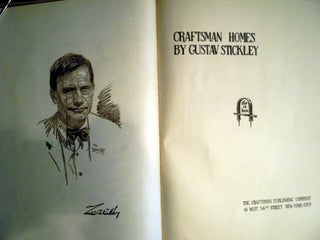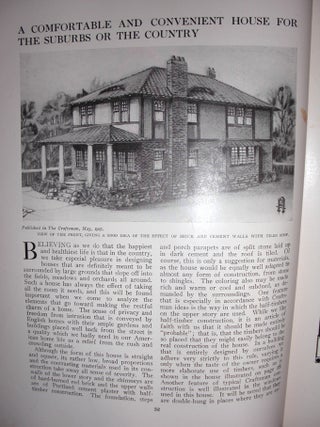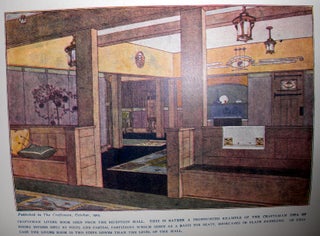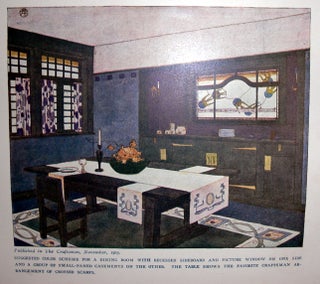Craftsman Homes and More Craftsman Homes - Two Volumes.
New York. The Craftsman Publishing Company. 1909 - 1912. First Editions. Profusely illustrated throughout by colour and monochrome renderings, drawings, schematics, floorplans,photographs etc. Two Volumes. Folios. 8" 11". 1. Imprinted burlap style cloth over boards: 2. Pictorial Boards.
Gustav Stickley (March 9, 1858–April 21, 1942) was a furniture maker and architect as well as the leading spokesperson for the American Craftsman movement, a descendant of the British Arts and Crafts movement.
In 1901, Stickley founded The Craftsman, a periodical which began by expounding the philosophy of the English Arts & Crafts movement but which matured into the voice of the American movement. He worked with architect Harvey Ellis to design house plans for the magazine, which published 221 such plans over the next fifteen years. He also established the Craftsman Home Builders Club in 1903 to spread his ideas about domestic organic architecture.
These ideas had an enormous influence on Frank Lloyd Wright. Stickley believed that:
* A house ought to be constructed in harmony with its landscape, with special attention paid to selecting local materials;
* An open floor plan would encourage family interaction and eliminate unnecessary barriers;
* Built-in bookcases and benches were practical and ensured that the house would not be completely reliant on furniture from outside;
* Artificial light should be kept to a minimum, so large groupings of windows were necessary to bring in light.
Between 1900 and 1916 a style of furniture featuring "...a severely plain and rectilinear style which was visually enriched only be expressed structural features and the warm tones of the wood..." gained popularity in the U.S. This furniture, referred to as "mission oak", was an "...American manifestation of the Arts and Crafts movement..." (Cathers, Furniture of the American Arts and Crafts Movement).(Wiki)
Stickley began making furniture in the mission oak style with the founding of the Craftsman Workshops in Eastwood, New York (now a part of Syracuse, New York) in 1904. His furniture was all handmade rather than machine made, crafted to be simple and useful; it was primarily built from native American oak, joinery was exposed, upholstery was carried out with natural materials (canvas and leather), wood could be varnished but never painted, and there were no unnecessary lines.
He moved his headquarters to New York City in 1905 and planned to establish a boarding school for boys in Morris Plains, New Jersey (what is now Parsippany, New Jersey). Craftsman Farms was designed to be self-sufficient, with vegetable gardens, orchards, dairy cows and chickens. The main house there is constructed from chestnut logs and stone found on the property, and exemplifies Stickley's building philosophy. As he wrote in The Craftsman:
A display of original "mission oak" dining room furniture at Mission San Juan Capistrano in Southern California.
"There are elements of intrinsic beauty in the simplification of a house built on the log cabin idea. First, there is the bare beauty of the logs themselves with their long lines and firm curves. Then there is the open charm felt of the structural features which are not hidden under plaster and ornament, but are clearly revealed, a charm felt in Japanese architecture....The quiet rhythmic monotone of the wall of logs fills one with the rustic peace of a secluded nook in the woods."[1]
Although the main house at Craftsman Farms was initially conceived of as a clubhouse for students, financial troubles forced Stickley to live there with his family instead. The planned boarding school never became a reality.
Stickley was a poor businessman and the American public began to reject his simple furniture in favor of revival styles; in 1915 he filed for bankruptcy, stopping publication of The Craftsman in 1916 and selling Craftsman Farms in 1917.
Gustav Stickley died on April 21, 1942.[
Covers rubbed and mildly soiled. Corners bumped. Very Good, bright crisp copies.
Item #8540
Price: $450.00

